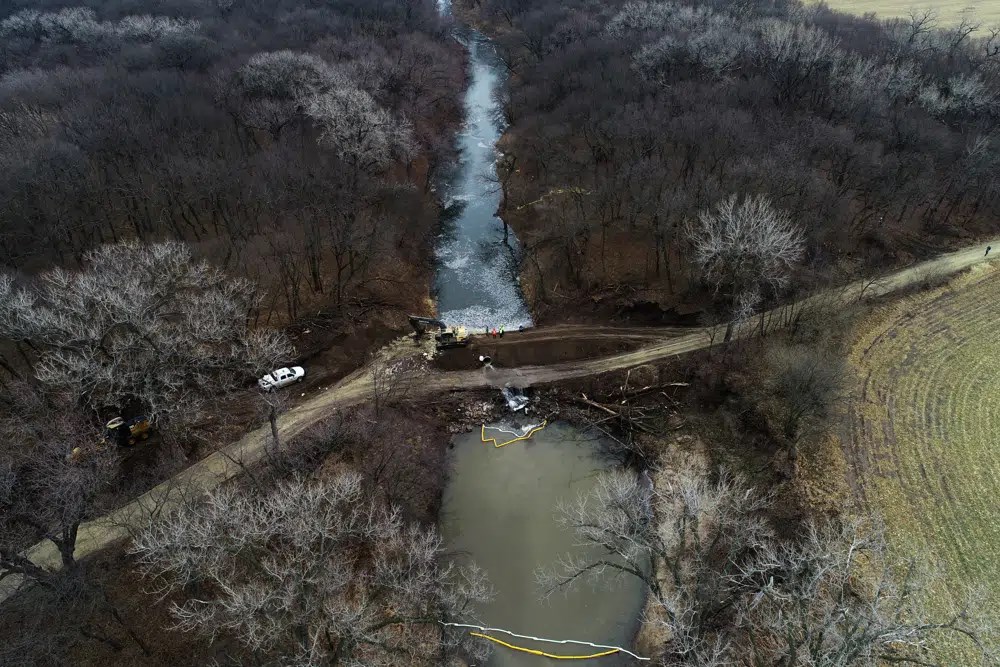Kansas sees the biggest oil spill in Keystone history
A burst pipe released enough oil into a creek in northeastern Kansas to fill almost an Olympic-sized pool.
-

The area where the Keystone pipeline ruptured dumping oil into a creek in Washington County, Kan, Dec. 9, 2022 (AP)
An oil spill in a creek in northeastern Kansas this week is the biggest onshore crude pipeline spill in more than nine years and by far the biggest in the Keystone pipeline's history, according to federal data.
The spill on the Keystone system was estimated to have been about 14,000 barrels, or 588,000 gallons, by Canadian company TC Energy on Thursday. It claimed that the affected pipeline segment had been "isolated", that booms or other barriers had been used to contain the oil on the scene, and that environmental monitoring, including round-the-clock air quality monitoring, had been instituted. It was unclear how the spill came to be.
The pipeline carrying oil from Canada to the Texas Gulf Coast experienced a drop in pressure, and the company reported that it had shut down its Keystone system that evening. About 150 miles (240 km) northwest of Kansas City, in Washington County, Kansas, oil leaked into a creek.
The spill in Kansas, according to Zack Pistora, a lobbyist for the Sierra Club, was larger than all 22 of the previous spills on the Keystone pipeline, which started operating in 2010. “This is going to be months, maybe even years before we get the full handle on this disaster and know the extent of the damage and get it all cleaned up,” he said.
Read next: "Small" oil leak off Peru coast devastates marine wildlife, inhabitants
According to data from the US Department of Transportation, a Tesoro Corp. pipeline in North Dakota ruptured in September 2013 and spilled 20,600 barrels.
A pipeline owned by Enbridge Inc. in Michigan burst in July 2010, spilling more than 20,000 barrels into Talmadge Creek and the Kalamazoo River. This spill was more costly. Numerous businesses and residences were evacuated.
The largest spill by the Keystone pipeline came in 2017, when more than 6,500 barrels spilled near Amherst, South Dakota, according to a US Government Accountability Office report released last year. The second largest, 4,515 barrels, was in 2019 near Edinburg, North Dakota.
Drinking water wells were unaffected by this week's spill, according to the US Environmental Protection Agency, and the oil didn't spread from the creek to larger waterways. There were no evacuation orders issued due to the spill, which occurred in pastureland about 5 miles (8 kilometers) northeast of Washington, the county seat with about 1,100 residents.
Although oil is frequently transported via pipelines rather than by railcar or truck, large spills can cause serious environmental harm.
Read next: Greek environment groups condemn Athens for oil spill from Iran tanker

 3 Min Read
3 Min Read








